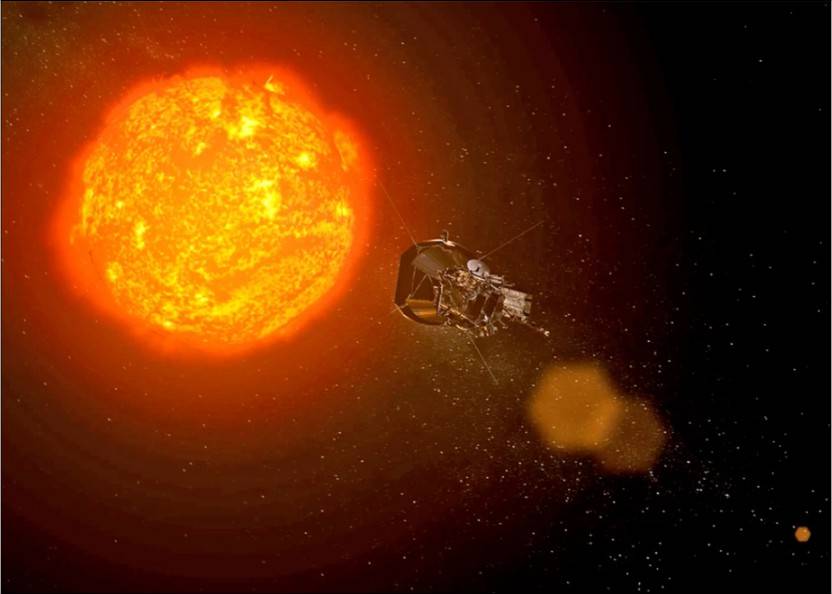Parker Solar Probe: The Genesis of Solar Journey

Parker Solar Probe: The Genesis of Solar Journey: Scientific investigations and space theories have qualified mankind to indulge in various lunar explorations such as the Luna, Pioneer and Ranger missions. After numerous critical researches over decades, mankind is finally set to explore the sun. The median phase of the calendar year is going to witness NASA’s first mission to ‘touch’ the sun. The first ever solar aircraft in the saga of inventions, the Parker Solar Probe, is scheduled to blast off from NASA’s Kennedy Space Centre on July 31st 2018, inside a Delta IV rocket vehicle. The roughly 10-foot high probe, named after astrophysicist Eugene Parker, is designed to scrutinize the outer corona of the sun.
The corona is a fine, tenuous envelope of hot ionized gases surrounding the sun and other stars. This is the outermost region of the sun’s atmosphere, with extremely high temperatures between one to three million kelvins. The corona extends several kilometres, generating solar winds that outspread to the entire solar system. The faint and dim corona, being guarded by the intensely blazing surface of the sun is impossible to be viewed by the naked eye. It only comes to view during solar eclipse, when the Moon passes between the Sun and the Earth and obstructs the solar surface. Astronomers can view corona with a special instrument called coronagraph.
The Parker Solar Probe is equipped with a 4.5 inch thick solar-shadow shield made of reinforced carbon-carbon composite, which will enable it to withstand the severe temperatures and extreme radiations of the outer solar atmosphere. The spacecraft will gradually go closer and closer to the sun by the use of Venus flybys in twenty four orbits over a course of about seven years. While flying around the sun, the probe will achieve a velocity up to 200 km/s, thus becoming the fastest object made by man.
The goals of the mission are to determine the magnetic field dynamics at the sources of solar wind, to trace the energy flow heating up the corona, to analyse solar wind accelerations and to explore the influences of plasma near the Sun. Five major investigations are to be performed to achieve these goals. The Electromagnetic Fields Investigation (FIELDS) will make direct measurements of electric and magnetic fields with the help of a flux-gate magnetometer. Integrated Science Investigation of the Sun (ISOIS) will measure energetic electrons, protons and heavy ions. Optical (WISPR) will gather images of the solar corona and inner heliosphere. Solar Wind Electrons Alphas and Protons (SWEAP) investigation will count the electrons, protons and helium ions and measure their various properties with the aid of a Faraday cup and two electrostatic analysers. Heliospheric Origins with Solar Probe Plus (HeliOSPP) is a theory formulated to ensure maximum scientific return from the mission.
NASA has stated that the probe will travel through the sun’s atmosphere, closer to its surface than any spacecraft before it, facing brutal heat and radiation conditions — and ultimately providing humanity with the closest-ever observations of the biggest star. The Parker Solar Probe will carry Eugene Parker’s revolutionary papers on the theory of solar wind. It will also have a plate carrying Parker’s inscriptions about the sun. Parker Solar Probe is contemplated to answer thousands of curious questions about solar physics that has baffled scientists and astronauts over decades. Scientists believe that the information gathered by the probe will help to make better forecasts of space-weather events that impact life on earth and inside space. The solar exploration may lead to the discovery of new wonders and formulation of new theories which in turn will impart a better understanding of the solar spaces. The disclosure of the mysteries of the sun is only a few months away.





